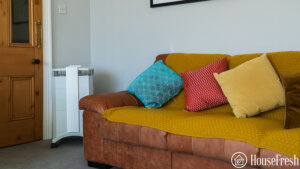If you’ve researched air purifiers, you’ve most likely come across the name Honeywell. This big brand has earned its reputation as a trustworthy household name and prides itself on producing no-nonsense, powerful air purifiers and dehumidifiers.
It’s worth noting that, according to the manual, the HPA60 is not made directly by Honeywell. It turns out that the HPA060 comes out of a company called Kaz USA (part of Helen of Troy Limited), which licenses the Honeywell trademark.

Helen of Troy Limited made over two billion dollars in sales last year, so it is not a small company. However, it is still worth making consumers aware that this product is being sold under a license because the marketing materials don’t make it clear that Honeywell International Inc does not manufacture this air purifier.
We have a few Honeywell products in HouseFresh HQ, including the popular Honeywell HPA300 and the questionable Air Genius 5 HFD320.
The Honeywell HPA060 is a smaller air purifier, which is a big market to be in. With popular units like the Levoit Core 300, Winix A231 and the Shark HP102, does the HPA060 stand tall next to the competition?
In this review, I will take you through the data we collected from using and testing the HPA060, look at its controls, features and functions, offer my opinions on the design and see how it compares to other air purifiers of similar size and CADR.
The lowdown on the Honeywell HPA060


With all the air purifiers to consider, you may not have time to read the full review. So, I’ve condensed it down to the main points from our performance test of this unit.
What we really like
What we think could be better
The specifications
The HPA060 is a smaller unit, so its size and performance should match its price tag. This unit retails for around $100, which is ballpark for air purifiers of this size with no smart functions. The issue comes with the performance per $ spent, and with a CADR of just 61 CFM, it is a poor result for a Honeywell unit.
| HouseFresh rating: | ★★☆☆☆ |
| Time to clean our 728 cubic feet test room (with the device running at top speed): | 74 minutes |
| Air purifier technology: | Pre-filter, True HEPA filter and activated carbon sheet |
| Recommended room size (4.8 air changes per hour): | 75 sq. ft. (5 ACH) |
| Clean air delivery rate (CADR): | Dust: 61 CFM Smoke: 48 CFM Pollen: 75 CFM |
| Dimensions (in inches / in cm): | 10.69 x 7.72 x 15.16 inches (27.15 x 19.61 x 38.51 cm) |
| Weight (in pounds / in kg): | 6.39 lbs (2.90 kg) |
| Filter life: | B Genuine Pre-Filter: 3 months H Certified True HEPA Filter: 12 months |
| Noise level in decibels (measured from 3 ft. away with a sound level meter): | Speed 1: 42.1 dB Speed 2: 48.2 dB Speed 3: 54.5 dB |
| Electricity consumption in watts (recorded with an electricity usage monitor): | Standby mode: 0.01 watts Speed 1: 11.44 watts Speed 2: 16.13 watts Speed 3: 21.21 watts |
| Estimated running cost (electricity consumption + official filter replacement): | $101.32 per year |
| Cost per CADR cfm (based on dust CFM as reported by AHAM): | $1.15 |
| Manufacturer’s warranty: | 5-year limited warranty |
| Country of manufacture: | China |
It looks like a Honeywell
They’re not straying from the path of design or operation — that’s not a bad thing

If you’re looking for a stylish air purifier to fit the aesthetic of your modern home, Honeywell isn’t the usual choice. They like to stick to their black, oval-like design, but that’s because they keep their air purifiers with no-frills.
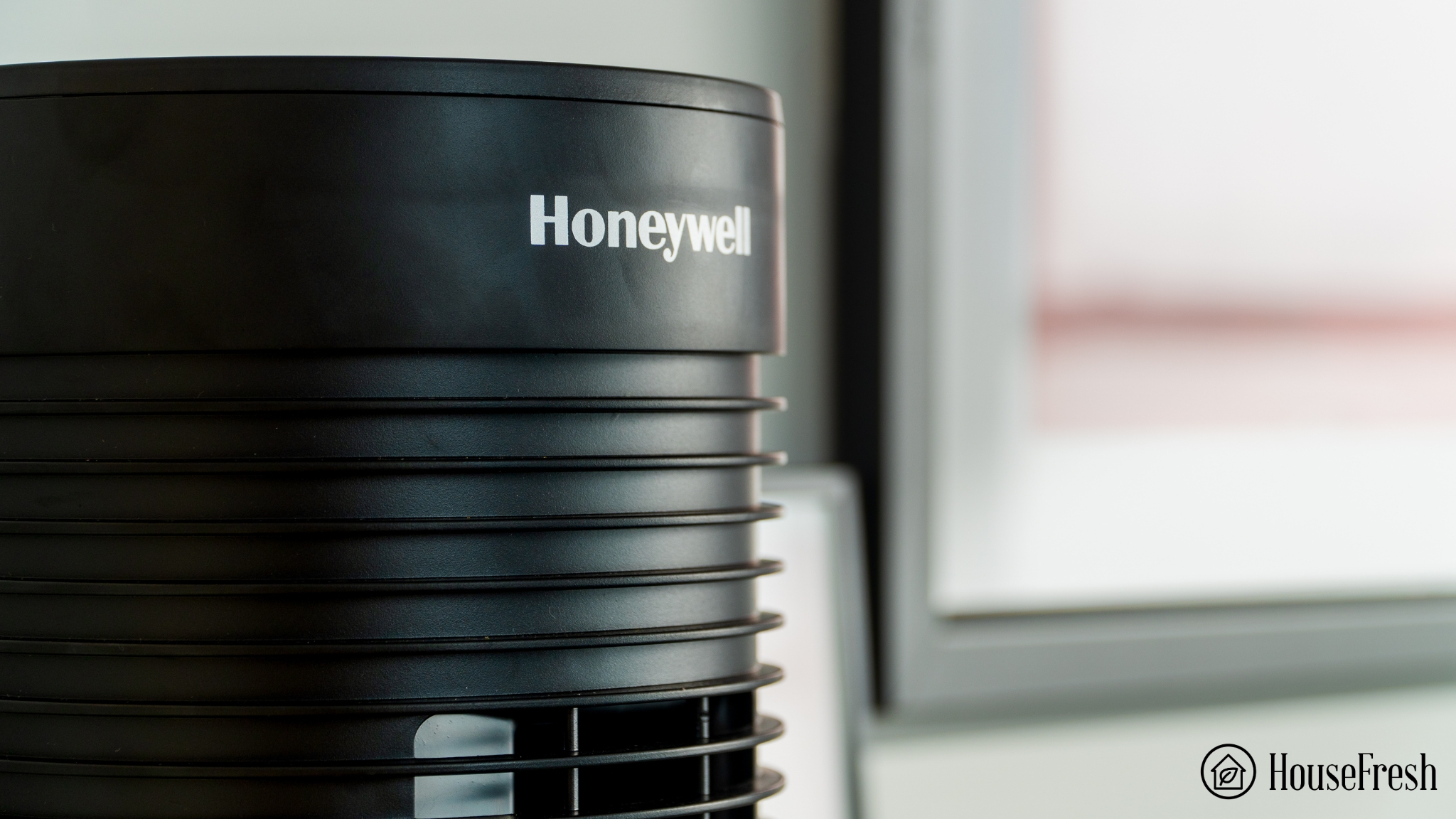
A smaller version of the HPA300 looks wise; the HPA060 is made of plastic with grill-like lines around the body. There’s a handle on the pack so you can move it easily from room to room (it’s also not heavy, weighing in at just over 6 lbs).
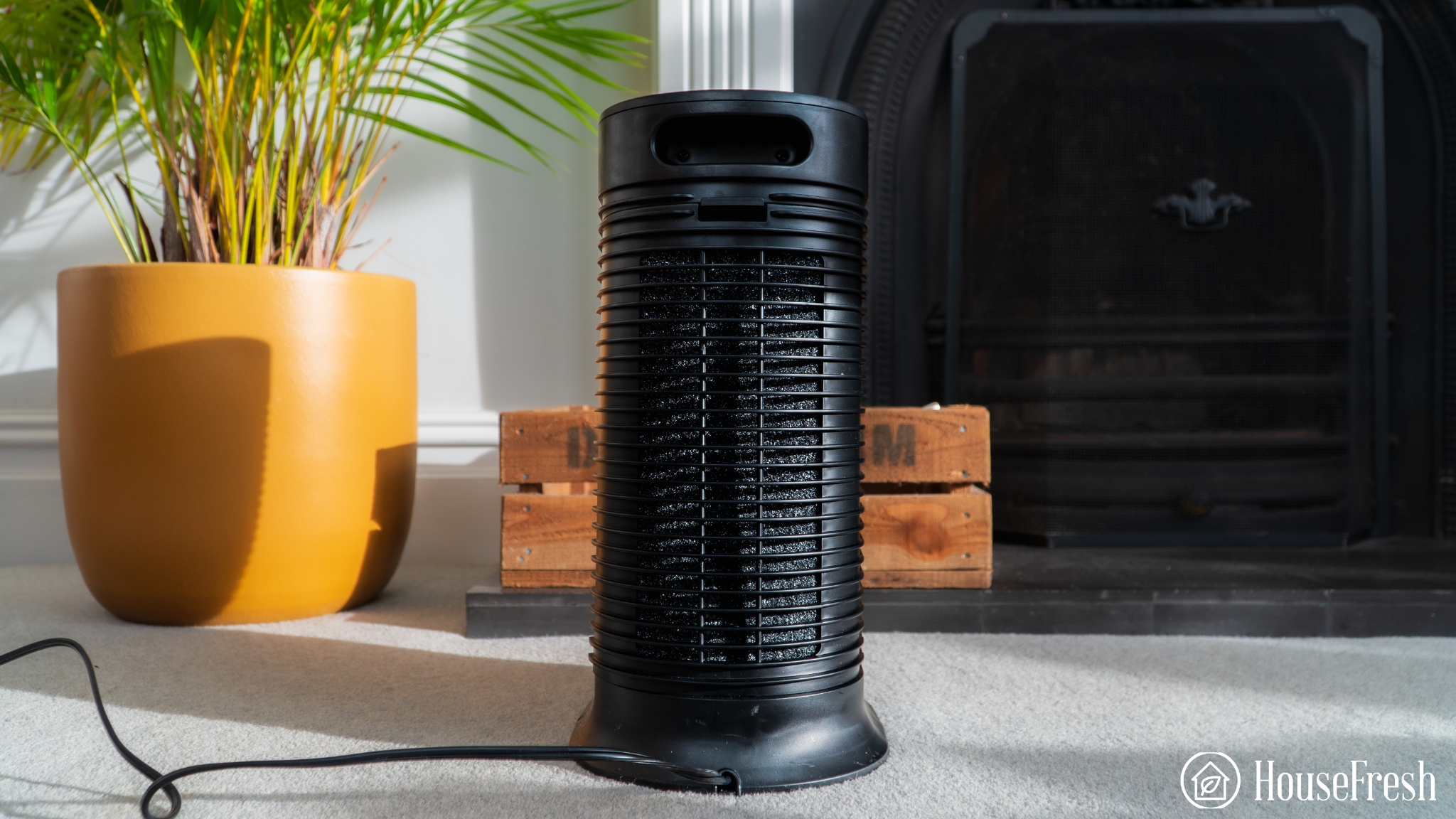
The HPA060 is intended for those who don’t have use for smart functions like an auto mode, AQI, sensors or app connectivity. The basic functionality means it’s easy to use and not much can go wrong.
The controls sit nicely on the top of the unit, with the fan speed setting built into a dial instead of the usual button format. There are three fan speeds to choose from low, medium and high. There are also two filter check lights, one for the main particle filter and one for the pre-filter (I’ll get into the filters in a second).

When you place the HPA060 next to other units of similar size, like the Levoit Core 300, Winix A231(A230) and Coway Airmega 150, you can see that it has a different style than the others. It also doesn’t take up much space, which is a big plus when running it in a small room.
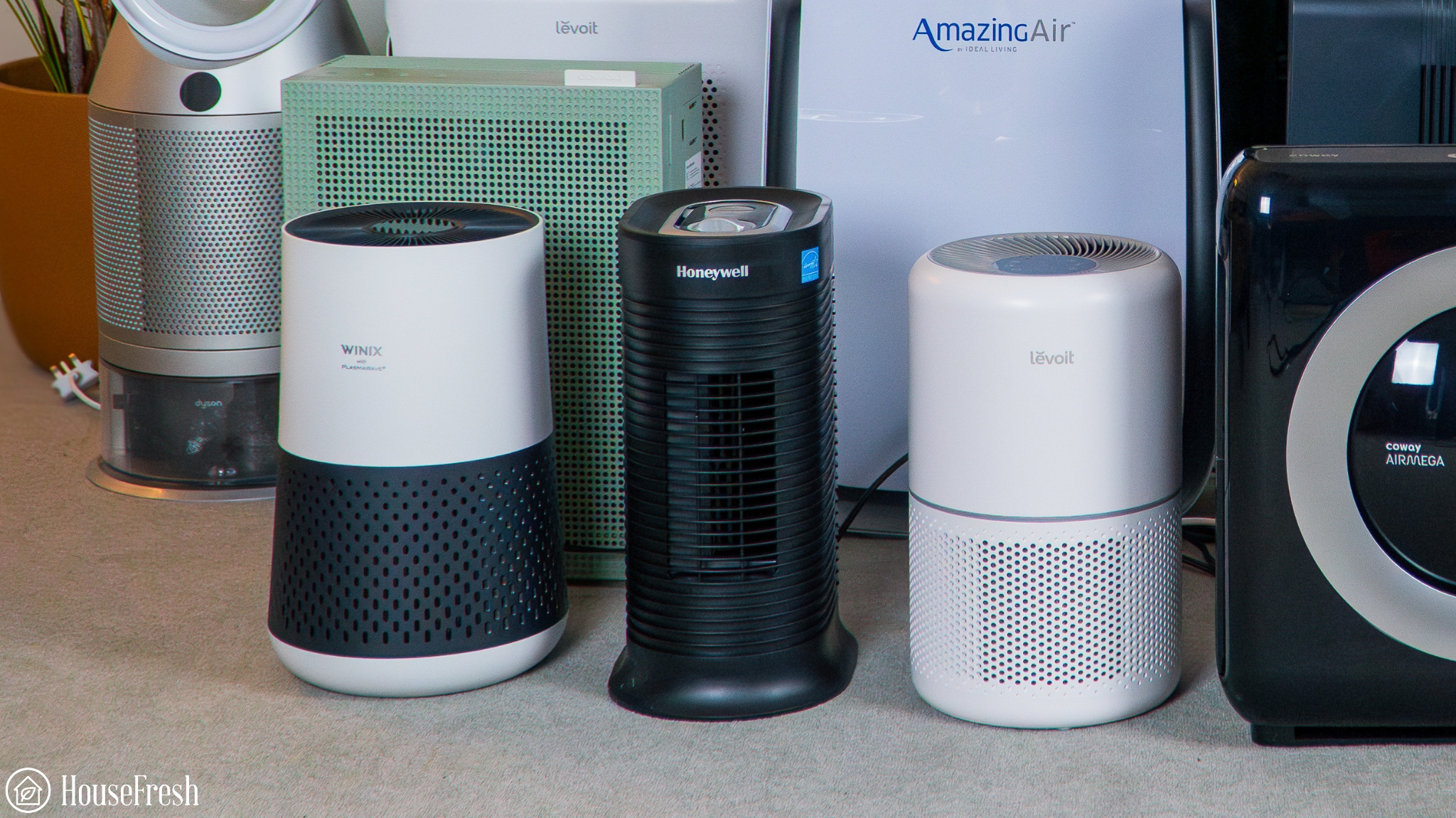
Something I don’t understand about the design of the HPA060 is the position of the inlet panel. Why have they limited the airflow to a narrow section when they could have used the side area like the HPA300?
Narrow, but still HEPA
Honeywell’s HEPA filters are ok, but the pre-filter is a letdown
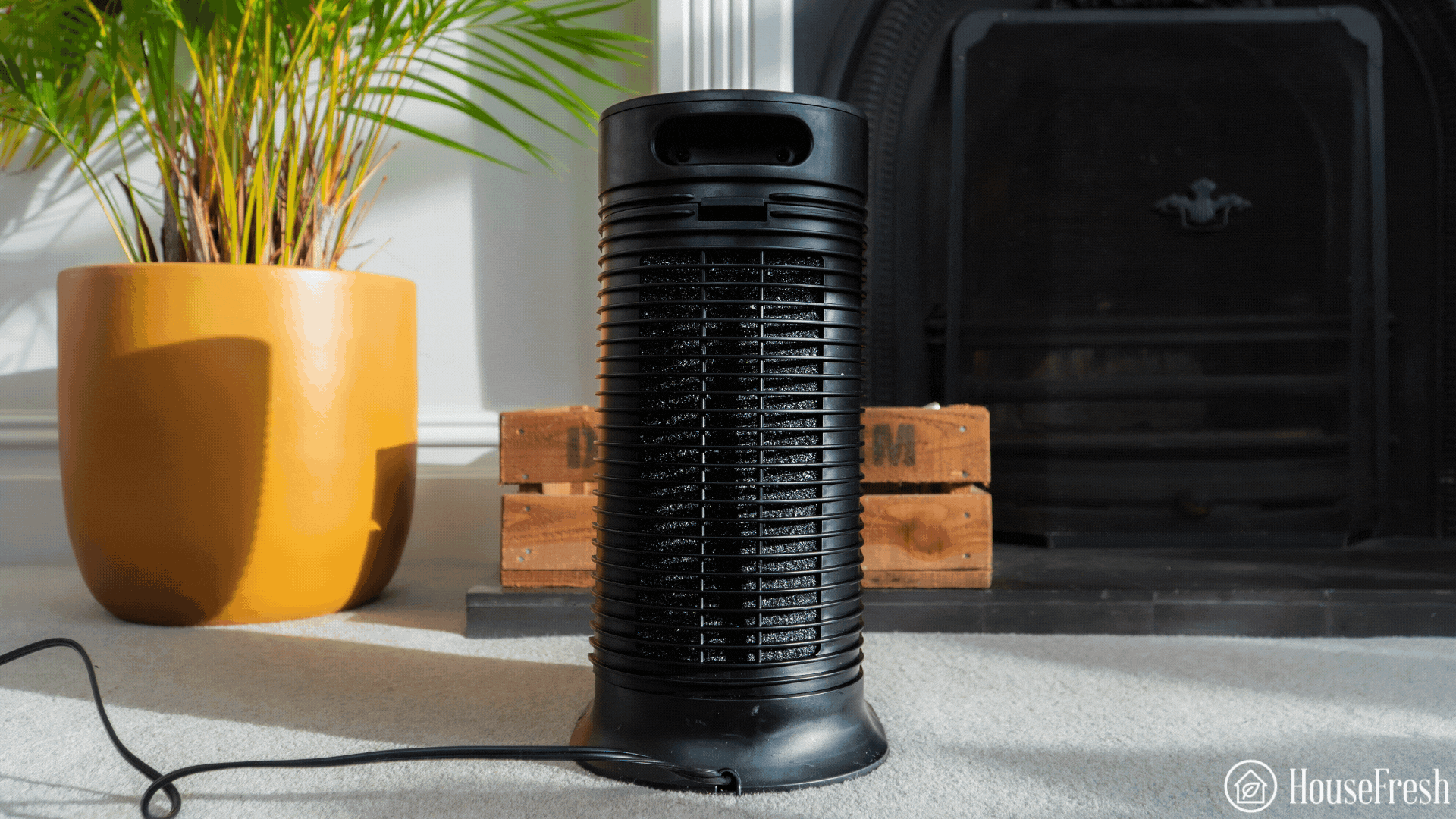
Because the inlet is located where it is, the filters must also be narrow. Inside is a True HEPA filter, which is highly effective at removing microscopic contaminants from your air down to 0.3 microns. But Honeywell has restricted itself by making it so narrow with minimal surface area.
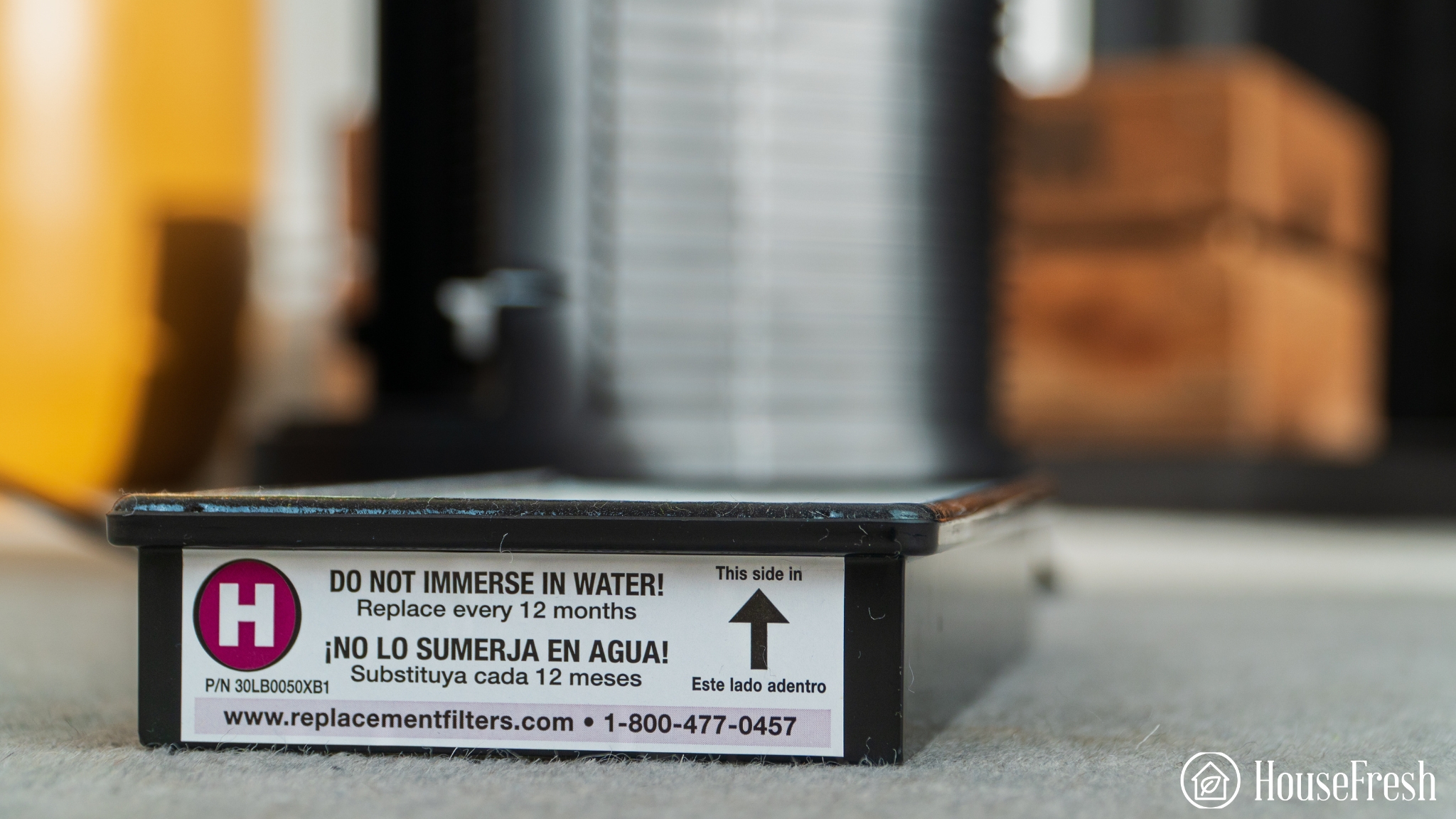
The HEPA filter in the HPA060 is sturdy and well-built, with a plastic shell to keep it rigid. Honeywell says that it should last around a year before it needs to be replaced, which is a plus as it’s usually half that time in other units.

The pre-filter that Honeywell has opted for in this unit doubles as an activated carbon filter and is a disappointment.
It is basically a wafer-thin sheet that “helps capture large particles such as dust, lint, fibers and pet fur and helps to reduce VOCs & odors from cooking, smoke, bathrooms and pets,” according to their marketing.
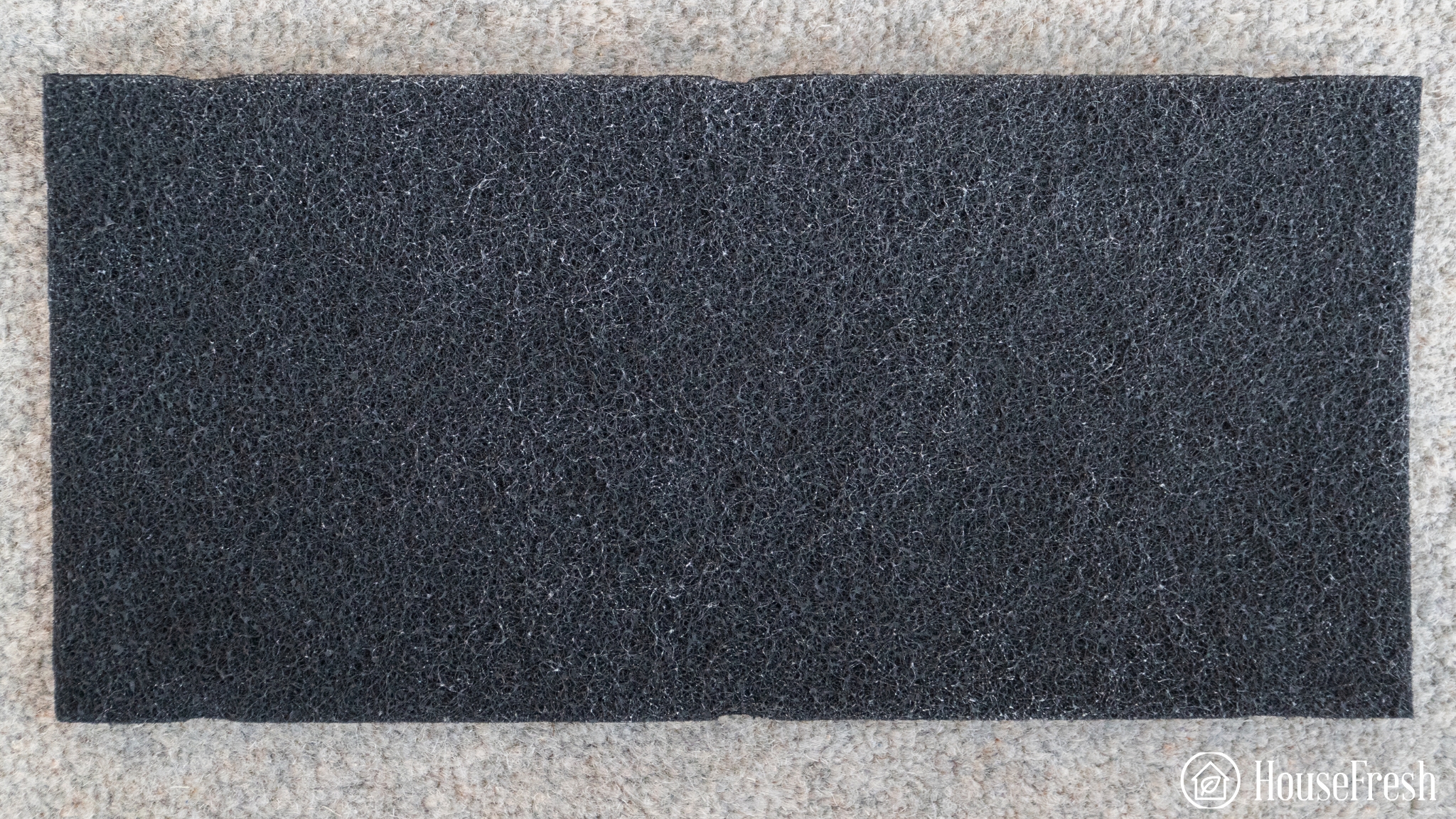
This sheet may be able to capture large particles, but there is not enough activated carbon embedded in this filter to tackle VOCs and odors.
You can see plenty of holes when you hold the pre-filter up to a light. And it only has a lifespan of 3 months, an extra cost that could have been avoided by installing a washable pre-filter instead.
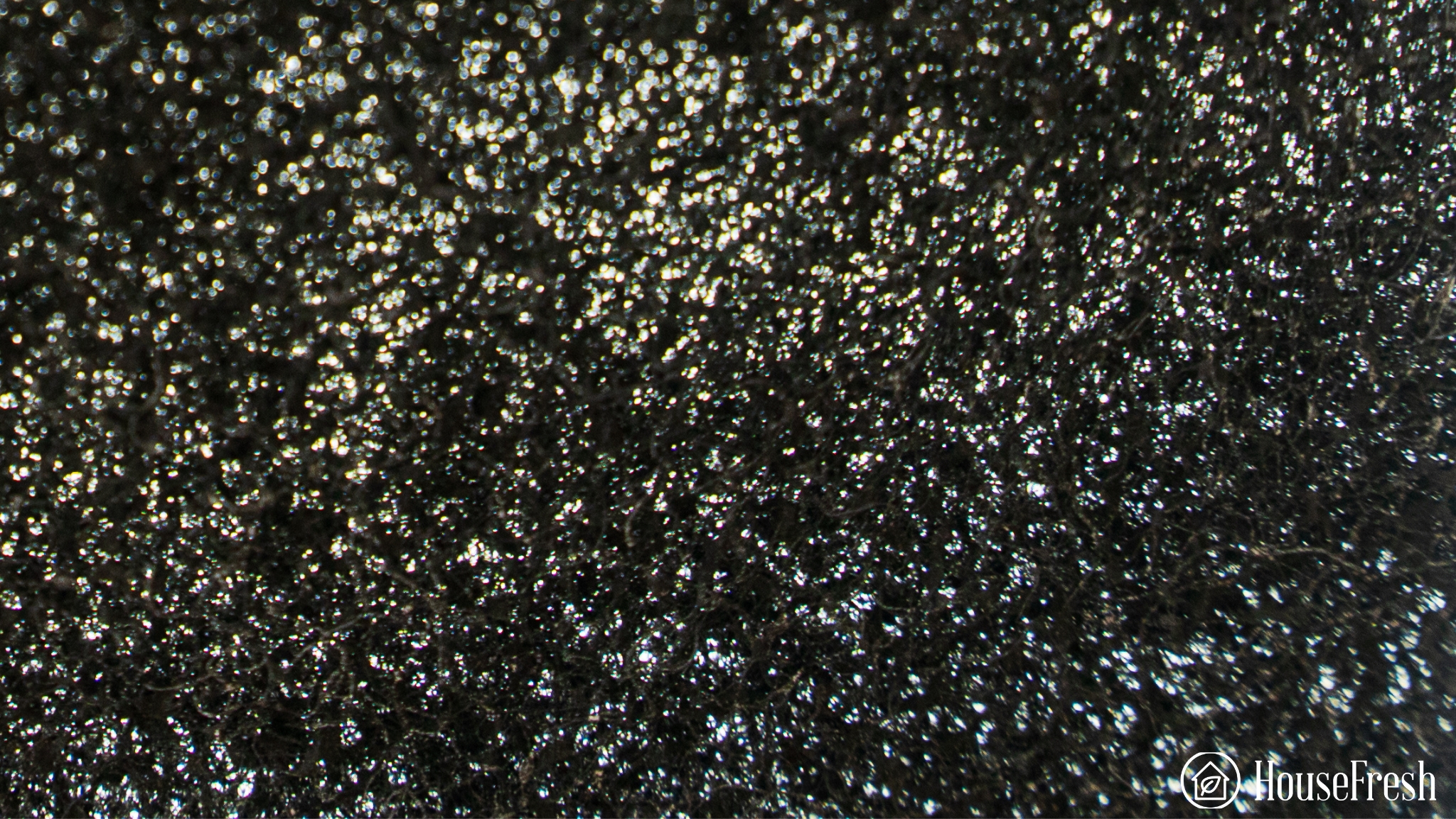
I promise I’m not being unnecessarily harsh here. I am pointing out all these issues with the filters because they will significantly impact how well the HPA060 will remove pollutants and odors from the air.
You can see how flimsy the filters in the HPA060 are just by looking at the results of the CADR test in the unit’s AHAM Verifide Performance Verification Certificate:
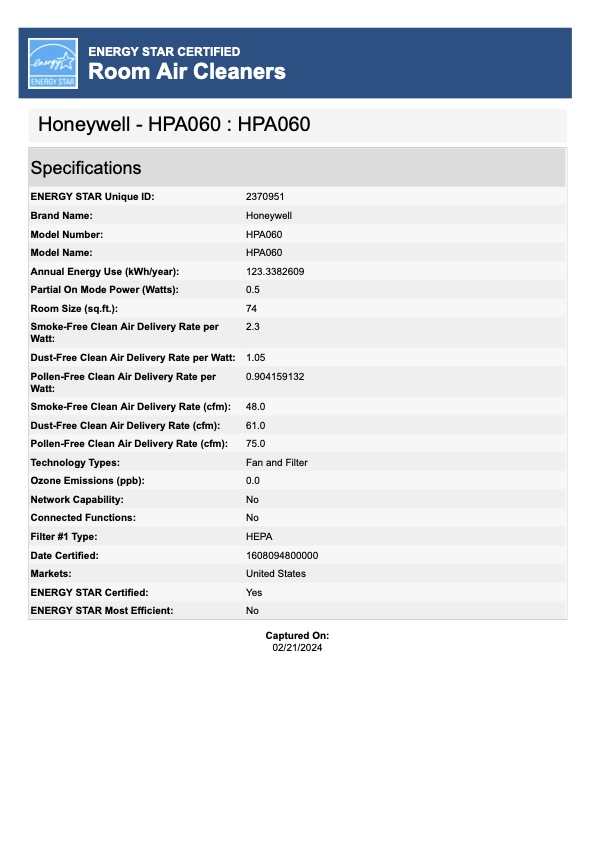
Once the filters are ready to be replaced, an indicator light on the control panel will illuminate. Changing either of the filters is painless, but it could get annoying when you have to do it every 3 months.
Here’s what you need to do:
- Switch off the unit and unplug it
- Remove the panel at the back of the unit
- The pre-filter is located on the inside of the back panel; remove and replace
- Pull the HEPA filter out and replace it with a new one
- Click the back panel back into place
See how simple it is with our filter replacement video:
When you purchase a new air purifier, it’s common for the HEPA filter to be wrapped in plastic packaging inside the unit. Be sure to remove all of the packaging from the HEPA filter otherwise, it won’t be able to perform its duties effectively.
The Honeywell HPA060 cleared our test room in 74 minutes
A disappointing result from a Honeywell air purifier, even for a small unit

We don’t just rely on manufacturer numbers. We test every unit we review in our HouseFresh home lab (a room at HQ) under the same conditions. Doing this allows us to compare results with other units and share our data with you.
- In our home lab of 728 cubic feet, we light an incense stick to generate particle pollution and VOCs.
- We set up our trusted Purpleair Indoor Sensor with the latest Bosch gas sensor to track levels of PM1ug/m3, PM2.5ug/m3 and PM10ug/m3 and VOCs in the air.

- We switch the air purifier to its highest speed and measure how long it takes to get our room air quality down to PM1 level to 0.
- We use an energy meter to measure precisely how much electricity is used when running the unit at the lowest and highest fan speed settings.

- We track sound levels emitted by the air purifier at different fan speeds with the help of a commercial sound meter.

Read more about our testing process, and feel free to get in touch if you have any questions.
First, we measured the performance of the HPA060 by recording how long it took to remove incense smoke from our home lab using our indoor sensor from Purpleair. This provides us with updates on airborne PM1.0ug/m3, PM2.5ug/m3 and PM10.0 ug/m3 particles in real-time.
Once Danny exported the data, he used Flourish to visualize it so you can clearly see how long it took in an easy-to-digest way:
It took around one hour and 15 minutes for the HPA060 to reduce PM1.0 levels down to zero.
I would say that the combination of a weak fan and a subpar HEPA filter is not working out well for this unit. Even for a small air purifier, it doesn’t possess the same kick as some of its rivals.
Air cleaning speed compared
The Honeywell HPA060 cleared our room in 74 minutes, but how does that compare to other air purifiers in the same price range or with similar capabilities? Explore the chart below to find out:
When we put this unit next to others of the same size and cost, you can see how much the HPA060 falls behind.
To continue my previous comparison, the Levoit Core 300 took 40 minutes to clear our room, and the Winix A231(A230) took 36 minutes. All in all, it seems to take the Honeywell HPA060 around 40 minutes longer to clean the air than small units from competitor brands.
Airflow test results
More powerful fans will result in faster and more effective air cleaning. That is why, as part of this test, Danny used the Testo 410i Anemometer to measure the fan speed levels directly from the air outlet of the device at each of the three fan speeds.
At its lowest fan speed, the HPA060 averaged 2.5 m/s. When moving to its second fan speed, it averaged 3.23 m/s. When reaching its highest fan speed, the HPA060 averaged 3.88 m/s.
Noise levels test results
Air purifiers make a sound; there’s no avoiding that, but some units make more noise than others. It can mean the difference between not being able to hear the TV and having to turn the air purifier off at night because you can’t sleep with the noise.
For a smaller air purifier, the HPA060 isn’t as quiet as some other units, but it also won’t make your room shake like you’re watching Apocolypse Now. We measured it at its lowest fan speed, producing 42.3 dB of sound and 53.7 dB at its highest.
Sound level is subjective. The volume I choose to listen to Motorhead may not be the same level my neighbors wished I listened to Motorhead. That’s why we made this video of the HPA060 running at all of its fan speeds so that you can get an idea of volume for yourself.
The cost to run a Honeywell HPA060: $101.32 per year
The HPA060 is an energy-efficient air purifier with costly filter replacements
1. Electricity costs = $35.33 per year
A cost you must consider when buying an air purifier is how much energy it uses. It’s recommended that you run your unit 24/7 in order to effectively clean the air in your home, but that also means pulling electricity non-stop. An air purifier that pulls a lot of power can become expensive pretty quickly.
This air purifier by Honeywell is a small unit, so it doesn’t require too much energy to run. When Danny used his electricity monitor during the test, he measured the HPA060 pulling 13.4 watts at its lowest fan speed and 23.3 watts at its highest.
I used the latest average electricity price per kWh reported by the U.S. Bureau of Labor Statistics to calculate how much you would spend if you were to run the HPA060 all day, every day. The total cost would come to $35.33 per year in associated energy costs.
2. Filter costs = $65.99 per year
Another running cost you need to consider is the price of replacement filters AND how often they need to be replaced. If you don’t buy new filters when the air purifier indicates it won’t work effectively.
Honeywell’s certified true HEPA filters must be replaced every 12 months, and they cost $25.99:
- AIR PURIFIER FILTER REPLACEMENT – This Honeywell HEPA Air Purifier H Filter helps capture up to 99.97% of the following molecules: pollen, pet dander, debris and smoke.
- WORKS WITH HONEYWELL AIR PURIFIERS FOR HOME – These Honeywell HEPA Filters are designed exclusively to fit Honeywell HEPA Air Purifier models HPA050 150, HPA 060 160 and HHT055 155 Series.
- EFFECTIVE AIR CLEANING & CIRCULATION – A Honeywell Air Purifier with a Honeywell Certified filter will filter and circulate air up to 4.8x an hour in stated room size. Replace HEPA Filters 1x per year. Pre-filters used with this filter are sold separately.
- COMPATIBLE DOESN’T MEAN COMPARABLE – For best performance, use only genuine Honeywell air purifier filters. Compatible air purifier filter replacements are not guaranteed to offer the same performance or efficiency.
- A BRAND YOU CAN TRUST – Improve your air quality and neutralize unpleasant smells for a cleaner breathing experience year round with Honeywell air cleaners, purifiers and humidifiers.
When it comes to their B pre-filters, Honeywell recommends they should be replaced every three months. The cost of swapping out filters this often will rack up over time, especially considering an official B pre-filter costs nearly $10:
- AIR PURIFIER FILTER REPLACEMENT–This Honeywell B+Pre-Filter helps capture larger impurities and reduces unpleasant smells and VOCs.* Includes 1 Carbon B+ Pre-Filter. Pre-filter should be changed every three months.
- WORKS WITH HONEYWELL AIR PURIFIERS FOR HOME–This air purifier filter works with these Honeywell models: HHT-055/HHT-155/HHT-080/HHT-081/HHT-085/HHT-090/HHT-100/HHT-145/HHT-149/HPA-050/HPA-150/HPA-245/HPA-249/HPA-248 Series, HPA060 Series, HPA160 Series.
- EFFECTIVE AIR CLEANING & CIRCULATION –A Honeywell Air Purifier with a Honeywell Certified filter will filter & circulate air up to 4.8x an hour in stated room size.** If you have pets or stale indoor air, air purifiers help deliver cleaner, fresher air.
- COMPATIBLE DOESN’T MEAN COMPARABLE –For best performance, use only genuine Honeywell air purifier filters. Compatible air purifier filter replacements are not guaranteed to offer the same performance or efficiency.
- A BRAND YOU CAN TRUST –Improve your air quality and neutralize unpleasant smells for a cleaner breathing experience year round with Honeywell air cleaners, purifiers and humidifiers.
The good news is that you could save some money by buying non-genuine filters, but we haven’t tested these, so we can’t speak to their performance. You can find a 4-pack of generic HEPA filters and pre-filters for the HPA060 retailing at around $40:
- Includes 4 (four) Premium H13 True Hepa Filter & 4 (four) Pre Filter Replacement for Select Honeywell Hepa Tower Air Purifer Models.
- Compatiable with Honeywell Filter H Filter B+ Part Number HRF-H1 HRF-H2 HRF-B1 HRF-B2 (Check for Your Model Below)
- Compatiable with Honeywell HEPA Tower Air Purifer Model HPA-050 HPA-060 HPA-061 HPA-150 HPA-160 HHT-055 HHT-155
- True HEPA Replacement Filter is able to capture 99.7% of airborne particles at 0.3 microns from the air that passes through the filter.
- Easy to Install No Tools Requried. We recommend to change your filters every 4 months to maintain your machine at optimal performance.
Bottom line
If you are looking for a small but powerful air purifier, there are better air purifiers out there than the Honeywell HPA060.
With so many great small air purifiers on the market, Honeywell hasn’t hit the mark with the HPA060.
It is relatively small and light, which makes it easy to move from room to room. It is easy to use, thanks to its one-dial control. It looks different in black and doesn’t follow the “white box” aesthetic. But the performance isn’t there when it comes to cleaning the air.
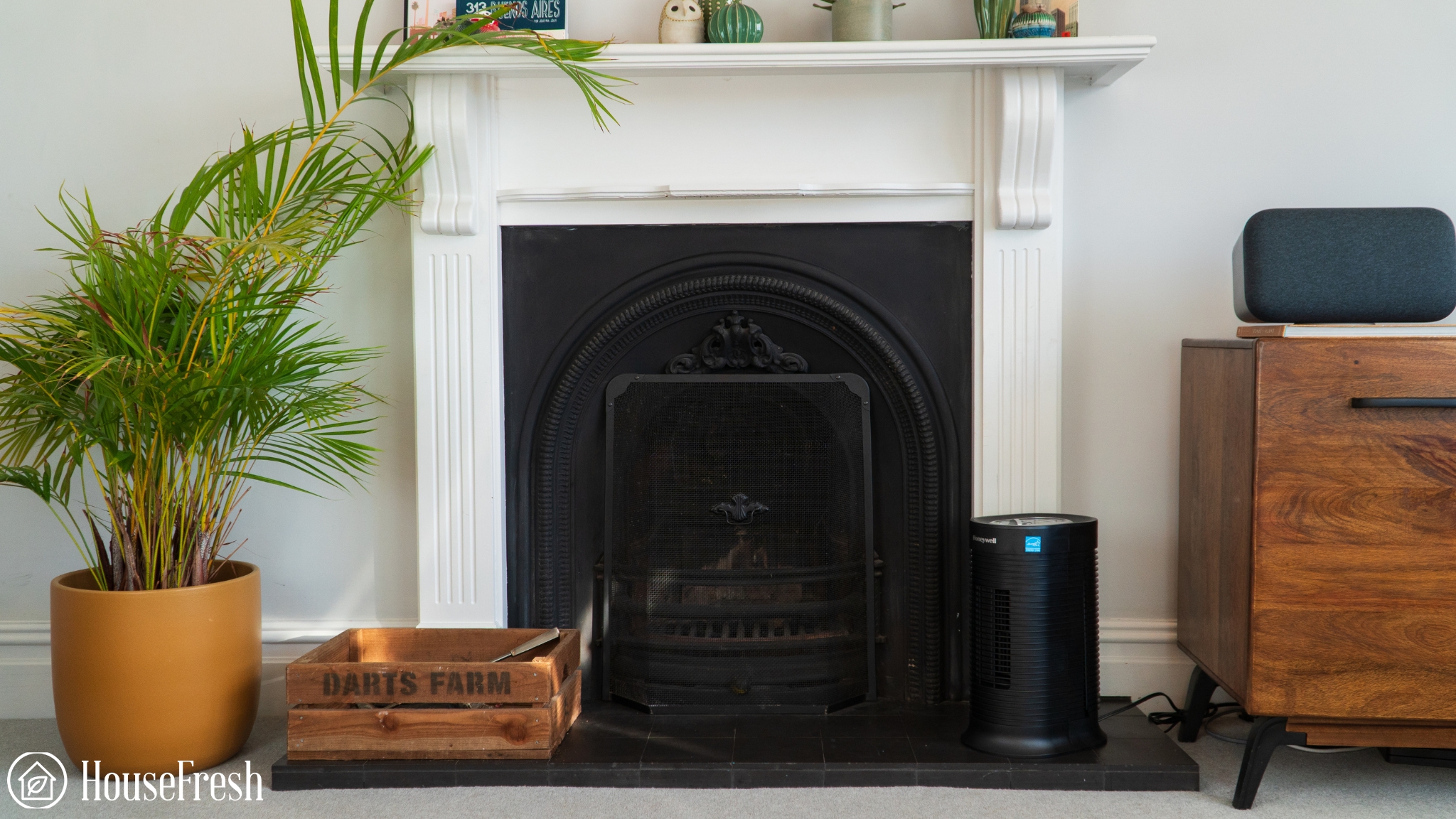
With a CADR (Clean Air Delivery Rate) of 75 CFM for pollen, the HPA060 doesn’t match up to the CADR you can get with the Levoit Core 300 (145 CFM) or the Winix A231’s (149 CFM).
If you’re looking for an air purifier for a small room, you can find higher-performing units with additional features at the same price or for a few extra dollars.
SOURCES
We calculated yearly costs associated with running Honeywell HPA060 for 24 hours a day for 365 days utilizing the U.S. average utility rate of $0.173/kWh as of March 13th, 2024.
Last update on 2024-04-27 / Affiliate links / Images from Amazon Product Advertising API






